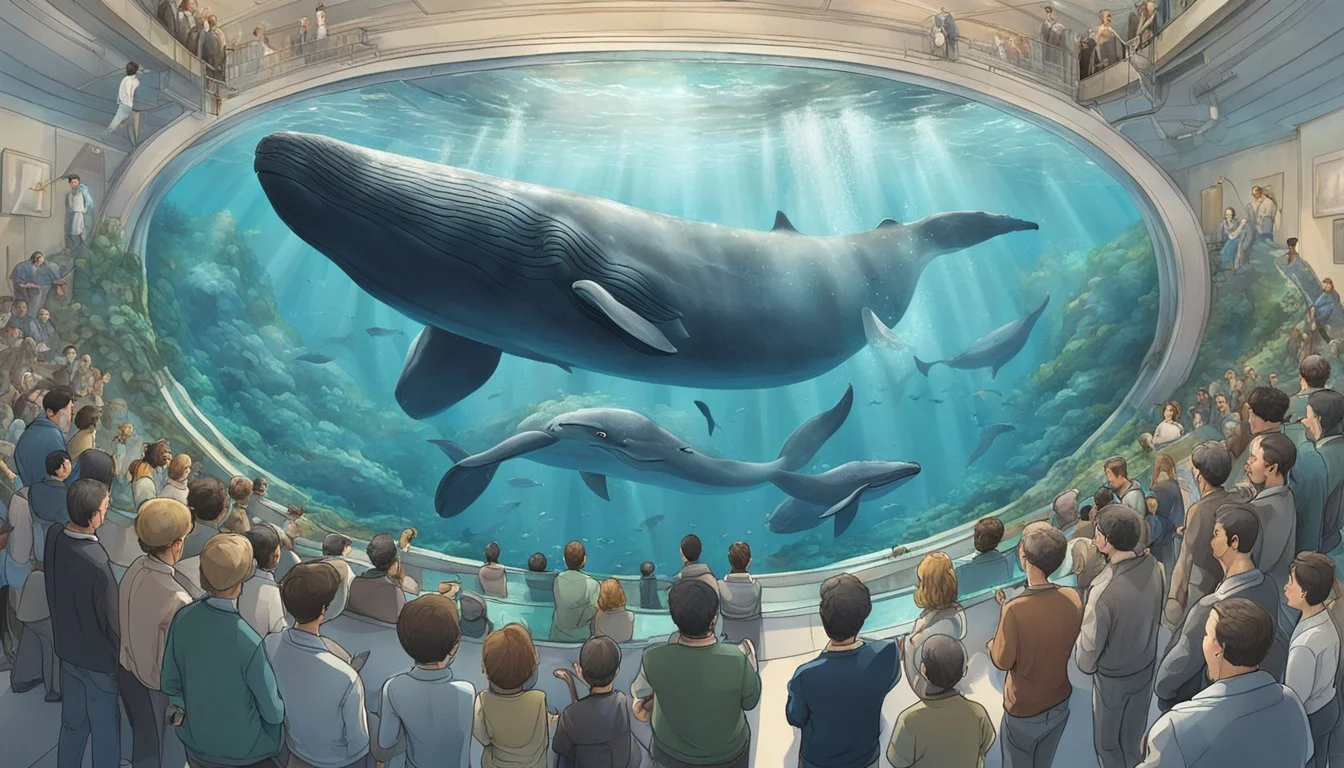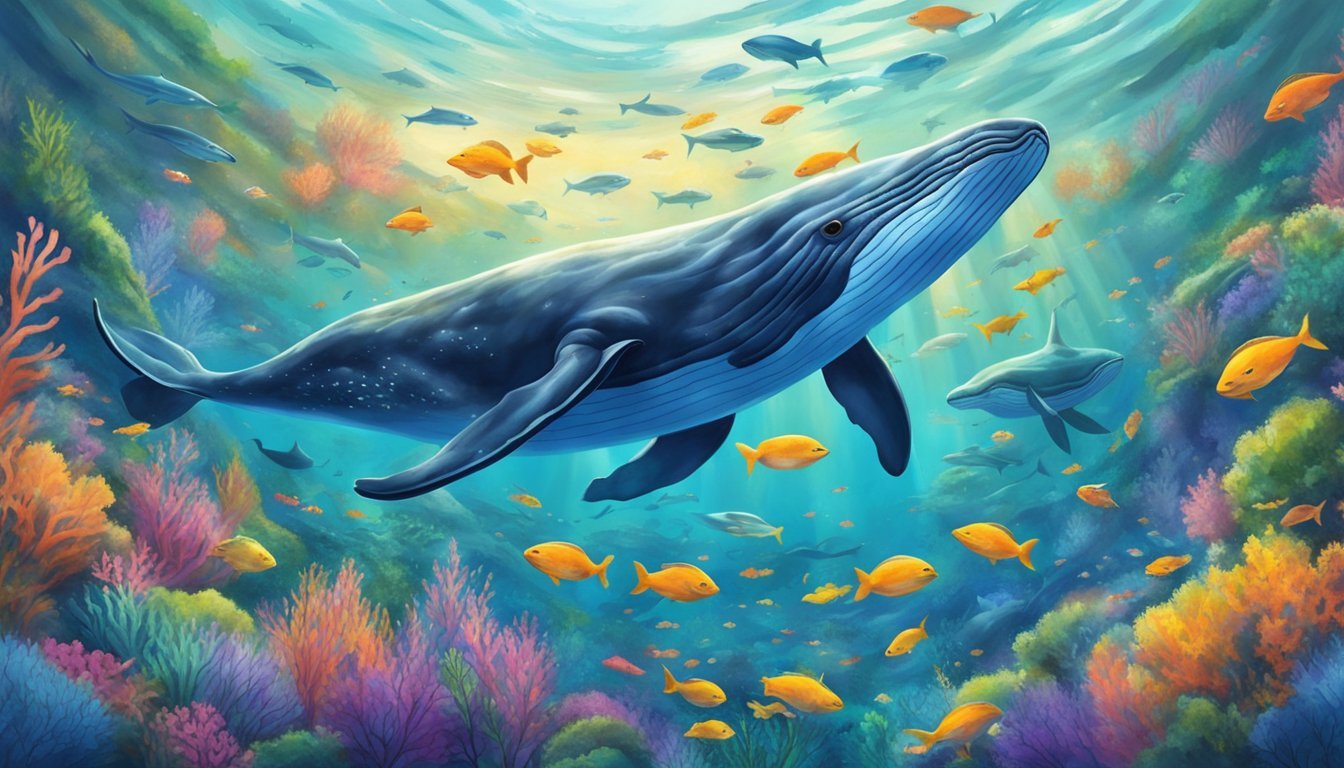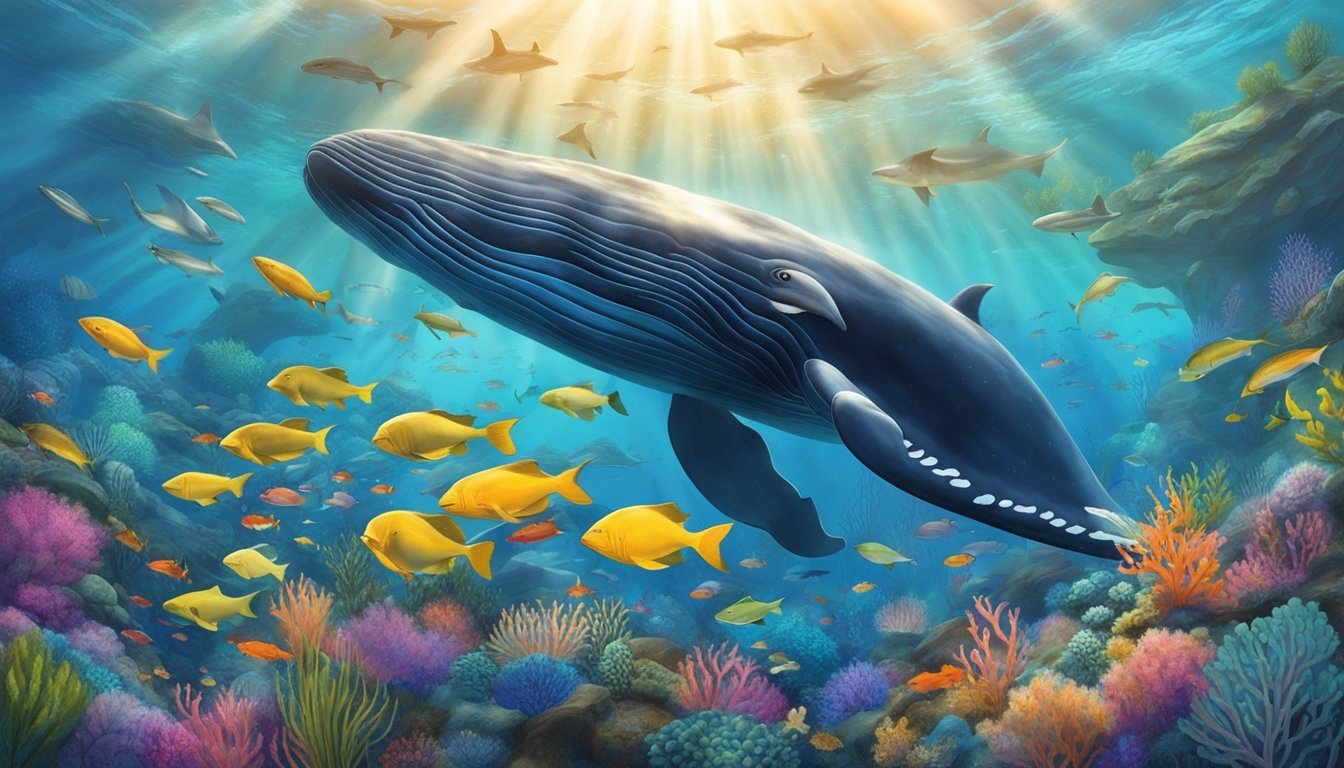Lonely Orca's Human Bond Shocks Scientists: The Whale That Craved Friendship
"The Whale" is a captivating 2011 documentary that tells the true story of Luna, a young killer whale separated from his pod off the coast of British Columbia. Narrated by Ryan Reynolds, the film chronicles Luna's remarkable attempts to befriend humans in Nootka Sound after losing contact with his family.
The documentary explores the deep connection that formed between Luna and the local community, highlighting the complex relationship between humans and wildlife. Directed by Suzanne Chisholm and Michael Parfit, "The Whale" offers a unique perspective on interspecies communication and the ethical dilemmas that arise when wild animals seek human companionship.
Through stunning cinematography and thoughtful storytelling, the film invites viewers to consider the emotional lives of orcas and the impact of human intervention on marine ecosystems. Luna's story sparked international interest and raised important questions about wildlife conservation and the boundaries between human and animal worlds.
History of Whale Documentaries
Whale documentaries have captivated audiences for decades, offering glimpses into the mysterious lives of these marine giants. The genre has evolved alongside advances in filmmaking technology and scientific understanding.
Evolution of Filmmaking Techniques
Early whale documentaries relied on limited footage captured from boats or shorelines. As underwater filming equipment improved, filmmakers could capture more intimate footage of whales in their natural habitats.
The advent of high-definition cameras and drones revolutionized whale documentaries in the 21st century. These tools allowed for stunning aerial shots and crystal-clear underwater sequences.
Advancements in audio recording techniques also enhanced the viewing experience. Hydrophones made it possible to capture the haunting songs of humpback whales and the complex vocalizations of orcas.
Pioneering Films and Series
Jacques Cousteau's "Whales" (1972) was one of the first major documentaries to bring these creatures to the small screen. It inspired a generation of filmmakers and marine biologists.
The BBC's "Blue Planet" series (2001) and its sequel "Blue Planet II" (2017) set new standards for whale documentaries. These productions featured groundbreaking footage and cutting-edge scientific insights.
National Geographic's "Secrets of the Whales" (2021) pushed the boundaries further. This series used innovative filming techniques to reveal previously unknown behaviors and social structures among various whale species.
Biological Insights
Whale documentaries offer a window into the fascinating biological characteristics of these marine mammals. From complex behaviors to intricate social structures, these films illuminate the unique adaptations that allow whales to thrive in oceanic environments.
Understanding Whale Behavior
Whales exhibit a range of behaviors that reflect their intelligence and adaptability. Humpback whales engage in elaborate courtship displays, including breaching and fin slapping. Orcas demonstrate sophisticated hunting techniques, such as intentionally beaching themselves to catch seals. Sperm whales use echolocation to navigate and find prey in the deep ocean.
Beluga whales have been observed engaging in playful behaviors, often interacting with objects in their environment. These behaviors showcase the cognitive abilities of whales and their capacity for problem-solving.
Social Structures and Communication
Whale species form complex social bonds and communicate through various methods. Orcas live in tight-knit family groups called pods, with distinct dialects and hunting strategies passed down through generations.
Humpback whales are known for their haunting songs, which can travel for miles underwater. These vocalizations play a role in mating rituals and may serve other social functions.
Sperm whales use clicking sounds to communicate and navigate. They form matriarchal societies, with females and calves staying together while males often roam independently.
Diet and Predation
Whales have diverse diets adapted to their habitats and physical characteristics. Baleen whales, like humpbacks, filter massive amounts of krill and small fish from the water. Their feeding strategies often involve coordinated group efforts.
Toothed whales, such as orcas and sperm whales, are apex predators. Orcas have a varied diet that can include fish, seals, and even other whale species. Their hunting techniques demonstrate remarkable coordination and strategy.
Sperm whales dive to extreme depths to hunt giant squid, showcasing their ability to withstand immense pressure. This unique adaptation allows them to access food sources unavailable to other marine mammals.
Whales in Captivity
Keeping whales in captivity raises significant concerns about animal welfare and ethics. The practice has sparked controversy and led to changes in marine park policies.
Impact on Whale Psychology
Captive whales often exhibit signs of stress and abnormal behaviors. Orcas in particular struggle with the confined spaces of tanks, which are far smaller than their natural ocean habitats. This restriction can lead to aggression, reduced lifespans, and physical health issues.
Orcas are highly social creatures with complex family structures in the wild. Captivity disrupts these bonds, potentially causing psychological distress. Some captive whales display repetitive behaviors like swimming in circles or floating listlessly at the surface.
Notable Cases
Tilikum, a male orca, became the focus of the documentary "Blackfish." Captured in 1983, he spent most of his life at SeaWorld Orlando. Tilikum was involved in three human deaths, including that of trainer Dawn Brancheau in 2010.
This incident brought intense scrutiny to SeaWorld's practices. The "Blackfish" documentary highlighted the potential dangers of keeping orcas in captivity and their treatment in marine parks.
SeaWorld faced significant backlash following the film's release. In 2016, they announced an end to their orca breeding program and began phasing out orca shows. This marked a major shift in the marine park industry's approach to cetacean captivity.
Conservation Efforts
Whale conservation efforts focus on protecting these magnificent marine mammals and their habitats. Dedicated organizations and researchers work tirelessly to ensure the survival of various whale species through habitat preservation, policy changes, and public awareness campaigns.
Protecting Natural Habitats
Marine protected areas play a crucial role in safeguarding whale populations. These designated zones limit human activities like fishing and shipping, reducing the risks of entanglement and vessel strikes.
Efforts to reduce ocean noise pollution have gained traction. Quieter ship designs and stricter regulations on underwater sound-generating activities help preserve the acoustic environment whales rely on for communication and navigation.
Coastal habitat restoration projects aim to improve water quality and protect essential breeding and feeding grounds. These initiatives often involve removing pollutants, restoring mangroves, and managing shoreline development.
Wildlife Conservation Initiatives
Research and monitoring programs track whale populations, migration patterns, and health status. This data informs conservation strategies and helps identify emerging threats.
Rescue and rehabilitation efforts assist injured or stranded whales. Specialized teams respond to emergencies, providing medical care and supporting animals' return to the wild when possible.
Educational programs raise public awareness about whale conservation. Documentaries, museum exhibits, and whale-watching tours engage people in marine mammal protection efforts.
Challenges and Success Stories
Climate change poses a significant threat to whale populations, altering food availability and migration patterns. Conservationists work to address these challenges through advocacy and research into adaptive strategies.
Entanglement in fishing gear remains a major issue. Innovative solutions like ropeless fishing technology and gear modifications show promise in reducing this threat.
The recovery of humpback whales serves as a conservation success story. International whaling bans and focused protection efforts have helped many populations rebound from near-extinction levels.
Ongoing efforts to save the critically endangered North Atlantic right whale demonstrate the complexities of modern conservation. Collaborative approaches involving governments, scientists, and industry stakeholders aim to address multiple threats simultaneously.
Interaction with Human Activities
Whale populations face significant impacts from human activities, particularly fishing and tourism. These interactions present both challenges and opportunities for conservation efforts and sustainable practices.
Whales and Fishing Industries
Entanglement in fishing gear poses a major threat to whales worldwide. Large whales, including humpbacks and right whales, frequently become trapped in nets, lines, and other equipment. This can lead to injuries, impaired movement, and even death.
Efforts to reduce these incidents include:
Developing whale-safe fishing gear
Implementing time-area closures in key whale habitats
Using acoustic deterrent devices
Some fishing practices, like bottom trawling, also impact whale food sources. This can force whales to change their feeding patterns or migrate to new areas.
Collaborative initiatives between fishermen and scientists aim to find solutions that protect whales while supporting sustainable fishing practices.
Tourism and Ethical Considerations
Whale watching has become a popular tourist activity, generating significant revenue for coastal communities. When conducted responsibly, it can foster appreciation for whales and support conservation efforts.
Ethical whale watching practices include:
Maintaining safe distances from whales
Limiting vessel numbers and time spent with whales
Using quieter engines to reduce noise pollution
However, unregulated tourism can disrupt whale behavior, causing stress and altering feeding or breeding patterns. Some areas have implemented strict guidelines and licensing requirements for tour operators.
Research shows that whale watching, when done ethically, can have minimal impact on whale populations while providing valuable data for scientists studying whale behavior and migration patterns.
Documentary Production Insights
Wildlife documentaries require careful planning, specialized equipment, and innovative techniques. Filmmakers face unique challenges in capturing marine life, especially whales, in their natural habitats.
Behind the Scenes
Documentary teams spend months researching whale behavior and migration patterns. They collaborate with marine biologists to identify prime filming locations. Specialized underwater cameras and drones are essential for capturing diverse perspectives.
Patience is key, as crews may wait days for the perfect shot. Sound recording presents unique challenges underwater. Hydrophones are used to capture whale vocalizations.
Safety measures are crucial when filming large marine mammals. Teams undergo extensive training and follow strict guidelines to minimize disturbance to the whales and their environment.
Advancements in Wildlife Photography
High-definition cameras have revolutionized whale documentaries. 4K and 8K resolution allows viewers to see intricate details of whale skin and behavior. Underwater housings protect expensive equipment from salt water damage.
Drones provide stunning aerial views of whale pods and feeding behaviors. Remotely operated vehicles (ROVs) can descend to great depths, capturing footage of rarely seen deep-sea species.
Low-light sensors enable filming in dimly lit underwater environments. Slow-motion capabilities reveal the grace of whale movements in stunning detail. Post-production techniques enhance colors and clarity, bringing the underwater world to life.
Influential Whale Documentaries
Several groundbreaking documentaries have shaped public perception and scientific understanding of whales. These films offer intimate glimpses into cetacean behavior, highlight conservation issues, and showcase the beauty of marine ecosystems.
Reviews and Cultural Impact
"Blackfish" (2013) sparked widespread debate about orca captivity. The film's critical examination of SeaWorld's practices led to policy changes and increased public awareness. Its impact extended beyond the screen, influencing animal welfare legislation.
"The Cove" (2009) exposed dolphin hunting in Japan, winning an Academy Award and mobilizing international conservation efforts. The documentary's undercover footage shocked viewers and prompted calls for stricter marine mammal protection laws.
National Geographic's "Secrets of the Whales" (2021) received praise for its stunning cinematography and intimate portrayal of whale cultures. Critics lauded its focus on familial bonds and unique behaviors among different species.
Highlighted Productions
National Geographic's "Secrets of the Whales" stands out for its comprehensive look at four whale species. The series explores communication, hunting techniques, and social structures across oceans.
"Monster Killer Whales" offers a thrilling examination of orca hunting behaviors. It showcases the intelligence and teamwork of these apex predators in their natural habitats.
"Fellowship of the Whales" provides an in-depth look at humpback whale migrations. The film follows a calf's journey from birth to adulthood, highlighting the challenges faced by these majestic creatures.
"Sonic Sea" (2016) focuses on the impact of ocean noise pollution on whales. It combines scientific data with compelling visuals to illustrate the urgent need for quieter seas.
Understanding Whales' Role in Ecosystems
Whales play a vital role in marine ecosystems, influencing biodiversity and nutrient cycles. Their presence impacts the health and balance of ocean environments in complex ways.
Keystone Species
Whales act as keystone species, exerting a disproportionate influence on their ecosystem relative to their abundance. Large whales like humpbacks and blue whales transport nutrients vertically in the water column through their feeding and excretion.
This "whale pump" fertilizes surface waters, boosting phytoplankton growth. Phytoplankton forms the base of marine food webs and produces over half the world's oxygen.
Killer whales, as apex predators, help control populations of seals, sea lions, and other marine mammals. This top-down regulation maintains ecosystem balance and biodiversity.
Inter-species Relationships
Whales form complex relationships with other marine life. Humpbacks have been observed protecting seals and other species from killer whale attacks, displaying altruistic behavior.
Many whale species host diverse communities of parasites and commensals. Barnacles and whale lice live on their skin, while small fish may seek shelter near large whales.
When whales die, their carcasses sink to the seafloor, creating "whale falls" that support unique deep-sea ecosystems for decades. These oases of life in the deep ocean host specialized species found nowhere else.




